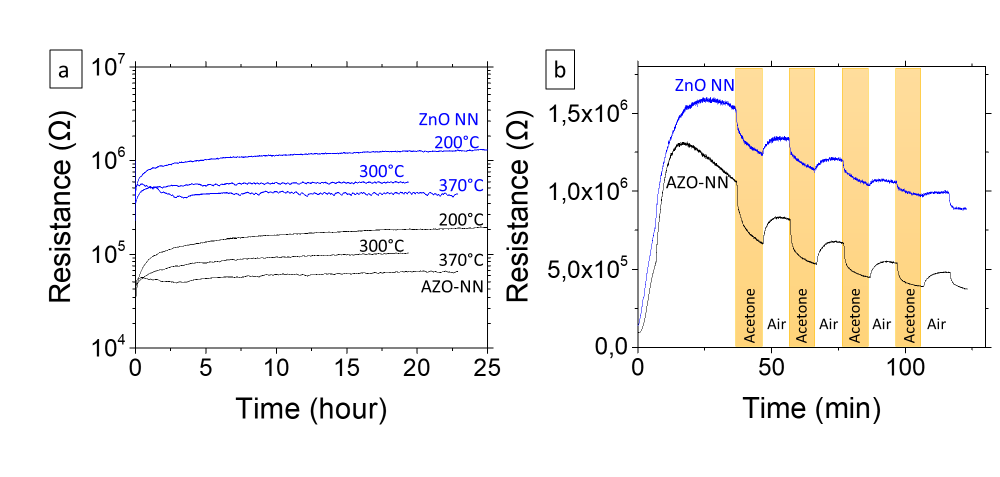
-
- to
Here you will find Fanny Morisot's paper.
"This work reports on the transfer of randomly oriented nanowire networks based on ZnO and Al-doped zinc oxide (AZO) encapsulated ZnO nanowires onto a complementary metal oxide semiconductor (CMOS) micro electro mechanical system (MEMS) platform. The substrate consists of an embedded tungsten micro-heater with gold interdigitated electrodes on top of the membrane. The presence of the micro-heater allows to control the operating temperature of the metal oxide material whilst the electrodes are used to measure the resistance across the sensing layer. These networks, also called nanonets, are prepared using simple technological steps: (i) nanowire growth, (ii) nanowire dispersion and (iii) nanowire filtration. The characterization of the resulting devices demonstrated for the first time that the transfer of the nanonets on the suspended membrane devices is feasible and does not cause any mechanical failure. Bench testing showed that the resistance of the nanonets respond to the modulation of the operational temperature in line with the semiconductor behaviour of the film. An operational temperature of 370°C was chosen thus to tune to the resistance in the range of the MΩ and carry out further gas testing which demonstrated that the sensor resistance changed upon exposure to 1.5 ppm of acetone. These tests showed that ZnO and AZO-passivated ZnO nanonets have sensitivity of [1.2-1.3] and [1.1-1.2], respectively, as measured by the ratio between the resistance in air and gas. It was also observed that the sensitivity of the devices prepared using the encapsuled nanonets is more stable than the bare ZnO nanonets."


